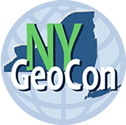
 Videos and slides from the conference have been uploaded. Check the agenda/session detail page. If you like what you see and you're not yet a member of the NYS GIS Association, please JOIN. It's only $10.
Videos and slides from the conference have been uploaded. Check the agenda/session detail page. If you like what you see and you're not yet a member of the NYS GIS Association, please JOIN. It's only $10.
Location Based Solutions Session
Broadway 1 & 2
Facilitator: Tom Sears, County of Steuben
Getting Students to School: A GIS Approach to Distance Based
Transportation Eligibility
Presenters: Timothy Calabrese, NYC Department of Education Office of Pupil Transportation
Timothy Calabrese is a geographer working at the New York City Department of Education’s Office of Pupil Transportation. He assists with managing the geographic information systems for the office and create the file that determines transportation eligibility for all non-disabled students in New York City.
Presenters: Joanna Laroussi, NYC Department of Education Office of Pupil Transportation
Joanna Laroussi is a geographer working at the New York City Department of Education’s Office of Pupil Transportation. She assists with managing the geographic information systems for the office and create the file that determines transportation eligibility for all non-disabled students in New York City.
Presenters: Kevin Jenkins, NYC Department of Education Office of Pupil Transportation
Kevin Jenkins is a geographer working at the New York City Department of Education’s Office of Pupil Transportation. He assists with managing the geographic information systems for the office and create the file that determines transportation eligibility for all non-disabled students in New York City.
Abstract
 How does the New York City Department of Education, administering the education over more than one million students, determine who is eligible for free transportation to school and who is not? The answer is based on the student’s grade and how far he or she lives from school. There is one additional rule; if one student on the block is eligible for free transportation to a particular school, all other students living on that block and attending the same school must also be eligible. Getting the answer involves ArcGIS network analysis layers, modeling data management processes, Python scripting and visual verification of results. This is done for all the students attending over 2,500 public and non-public schools located in a variety of settings from traditional school buildings to high-rise office buildings. The landscape involves an intricate street network of 130,000 line segments that includes pedestrian overpasses, walkways within apartment complexes and a variety of other street feature types. This presentation is relevant to those interested in school transportation and pedestrian networks and is also a good example of stringing multiple GIS processes together in a high data volume context.
How does the New York City Department of Education, administering the education over more than one million students, determine who is eligible for free transportation to school and who is not? The answer is based on the student’s grade and how far he or she lives from school. There is one additional rule; if one student on the block is eligible for free transportation to a particular school, all other students living on that block and attending the same school must also be eligible. Getting the answer involves ArcGIS network analysis layers, modeling data management processes, Python scripting and visual verification of results. This is done for all the students attending over 2,500 public and non-public schools located in a variety of settings from traditional school buildings to high-rise office buildings. The landscape involves an intricate street network of 130,000 line segments that includes pedestrian overpasses, walkways within apartment complexes and a variety of other street feature types. This presentation is relevant to those interested in school transportation and pedestrian networks and is also a good example of stringing multiple GIS processes together in a high data volume context.
Village of East Hampton, Police Department, Incident Mapper
Presenter: Girk Cakmak, Bowne Management Systems, Inc.
Girk Cakmak, M.S./M.B.A., Bowne Managing Director, and is a technical consultant responsible for business development and support of Bowne clients in the Albany/Capital Region. Prior to joining Bowne in 2004, he worked at the NASA Spatial Information Technology Center at FMCC as the Operations Manager and at the New York State Department of Health’s Institute for Advanced Health Care Management office as a consultant. Previously, he held various supervisory and managerial posts in consulting, marketing and urban planning.
Mr. Cakmak holds an M.S. in Regional Planning and a B.S. in Urban and Regional Planning from Istanbul Technical University. He also holds an M.B.A. and a Certification of Advanced Study in Planning and Policy Analysis from State University of New York. Mr. Cakmak is the co-chair of Project Management Workgroup of NYS Forum and an active member of New York State GIS/LIS Association, URISA and the Project Management Institute (PMI).
Abstract
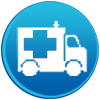 In an effort to decrease response time to its residents and seasonal visitors, the Easthampton Village Police Department turned to Bowne to develop a live-call, incident mapper. Providing Fire, EMS and Police emergency dispatch services for an 80+ square mile response area, the department needed a simple GIS viewer that tied directly to its existing Computer Aided Dispatch (CAD) system. The resulting GIS-based map viewer is a dynamic tool that displays live incidents as they are received by the call center. Dispatchers can then use the incident viewer to more clearly define caller locations, route first responders to the scene and to relay relevant geographic data to those who are already on-scene.
In an effort to decrease response time to its residents and seasonal visitors, the Easthampton Village Police Department turned to Bowne to develop a live-call, incident mapper. Providing Fire, EMS and Police emergency dispatch services for an 80+ square mile response area, the department needed a simple GIS viewer that tied directly to its existing Computer Aided Dispatch (CAD) system. The resulting GIS-based map viewer is a dynamic tool that displays live incidents as they are received by the call center. Dispatchers can then use the incident viewer to more clearly define caller locations, route first responders to the scene and to relay relevant geographic data to those who are already on-scene.
Combating Alien Invaders with Geographic Information Science
Presenter: James Kernan, SUNY Geneseo
Abstract
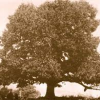 Forest ecosystems in the United States have been dramatically altered over the past century by invasive species. Dominant canopy species such as the American chestnut and American elm all but disappeared in the first half of the 20th century, both victims to pathogenic fungi. Invasive insects, or ‘forest pests’, have become increasingly problematic as global trade networks expand and intensify. Gypsy moth, Asian longhorn beetle, wooly adelgid and the emerald ash borer, pose contemporary threats to many Eastern tree species. Understory species are also threatened by a host of herbaceous and woody invaders which compete more effectively. To address this overwhelming problem, managers and scientists have shifted from ‘eradication’ to ‘delay’ strategies, so that the economic and ecological consequences of an invasion can be distributed over a longer time period. ‘Early detection and rapid response’ is central to this delay strategy. Geospatial technology such as GPS, GIS, and remote sensing are critical technologies that help managers, planners, and scientists inventory and monitor the spread of invasive species, model future infestations, conduct risk analyses, and develop remediation plans. Community-based GIS efforts in Livingston County, NY will be discussed during the presentation.
Forest ecosystems in the United States have been dramatically altered over the past century by invasive species. Dominant canopy species such as the American chestnut and American elm all but disappeared in the first half of the 20th century, both victims to pathogenic fungi. Invasive insects, or ‘forest pests’, have become increasingly problematic as global trade networks expand and intensify. Gypsy moth, Asian longhorn beetle, wooly adelgid and the emerald ash borer, pose contemporary threats to many Eastern tree species. Understory species are also threatened by a host of herbaceous and woody invaders which compete more effectively. To address this overwhelming problem, managers and scientists have shifted from ‘eradication’ to ‘delay’ strategies, so that the economic and ecological consequences of an invasion can be distributed over a longer time period. ‘Early detection and rapid response’ is central to this delay strategy. Geospatial technology such as GPS, GIS, and remote sensing are critical technologies that help managers, planners, and scientists inventory and monitor the spread of invasive species, model future infestations, conduct risk analyses, and develop remediation plans. Community-based GIS efforts in Livingston County, NY will be discussed during the presentation.
The Face of Geocoding Has Changed in New York State
Presenter: Jason Baum GISP and Craig M. Fargione, NYS ITS GIS Program Office Craig M. Fargione
Jason Baum, GISP is a Technical Project Manager at the NYS GIS Program Office in Albany. He has a Masters in Planning and a Graduate Certificate in GIS from the State University at Albany. Jason was previously the GIS Coordinator for the Town of Bethlehem, NY and also worked as a Consultant for MapInfo Corp.
Abstract
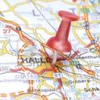 There have been significant advancements in address geocoding in the state: A state-supported Geocoding web service is now available. A proof of concept is underway to further improve geocoding through the development of a geocoding broker, and an initiative to map the location of every address in the state is well underway. These initiatives will combine to provide users and application developers vastly improved geocoding.
There have been significant advancements in address geocoding in the state: A state-supported Geocoding web service is now available. A proof of concept is underway to further improve geocoding through the development of a geocoding broker, and an initiative to map the location of every address in the state is well underway. These initiatives will combine to provide users and application developers vastly improved geocoding.
This presentation will introduce participants to the geocoding web service. Next it will provide some detail on new concepts called a Geocoding broker. This broker contains logic to send (or broker) a request to various geocoding locators to maximize both the spatial accuracy, and likelihood of a successful match.
Next, the presentation will provide background on the Statewide Address Mapping (SAM) initiative which is well underway. SAM will map the rooftop location of every address in the state resulting in vastly improved reference data which will further improve geocoding.
Finally, the presentation will cover maintenance strategies. You will learn what can be done to assure quality hits on address you care about and how large volumes of transactions will help prioritize areas for improvement.
Sharing GIS Services & Saving $’s Session
Broadway 3 & 4
Facilitator: Bruce Oswald, Oswald Associates LLC
A Model for Interagency Shared GIS Services: A Case Study from the
North Country
Presenter: Dave Cook
Dave Cook is a certified geographic information systems professional with a bachelor’s degree in Earth Science, master’s in geography, and master’s in business administration. Dave has ten years of GIS work experience as a university GIS lab manager, researcher at the State of Wyoming’s Geographic Information Science Center, and most recently as a GIS Analyst at the Development Authority of the North Country (DANC). Mr. Cook’s projects include GIS planning and implementation for municipalities across the North Country as well as serving on the NYSGIS Association’s Regional Coordination Committee.
Presenter: Morgan Healy
Morgen Healy is a Senior Project Manager for the State and Local Government Team in AppGeo’s Boston office. Ms. Healy has eleven years of experience as a GIS professional including experience as a consultant and as a County GIS Technician. At AppGeo, she manages and leads implementation for a wide range of GIS projects for local municipalities, as well as state government and federal agencies. Projects include website design and development, data automation and maintenance, and ongoing implementation assistance and planning. She has expertise with ArcGIS and Open Source GIS Software.
Abstract
 In 2012, six government/regional agencies in the North Country partnered to embark on a Shared GIS Services Planning Study. These partner agencies include: The Development Authority of the North Country, the New York State Tug Hill Commission, the City of Watertown, and Lewis, Jefferson, and St. Lawrence counties. Applied Geographics, Inc was hired to perform the study and write the plan. The goal of a shared GIS services model is to increase GIS efficiency, reduce costs, improve GIS services, and ultimately save taxpayer dollars. Although the concept of shared GIS is not new, a collaboration of this size (both geographically and number of agencies) is both unprecedented and ambitious. The project approach, findings and recommendations, ROI analysis and lessons learned will be discussed.
In 2012, six government/regional agencies in the North Country partnered to embark on a Shared GIS Services Planning Study. These partner agencies include: The Development Authority of the North Country, the New York State Tug Hill Commission, the City of Watertown, and Lewis, Jefferson, and St. Lawrence counties. Applied Geographics, Inc was hired to perform the study and write the plan. The goal of a shared GIS services model is to increase GIS efficiency, reduce costs, improve GIS services, and ultimately save taxpayer dollars. Although the concept of shared GIS is not new, a collaboration of this size (both geographically and number of agencies) is both unprecedented and ambitious. The project approach, findings and recommendations, ROI analysis and lessons learned will be discussed.
Joint Infrastructure Management Initiative
Presenters: Richard Snow, Jefferson County Highway Department & Mickey Dietrich, NYS Tug Hill Commission
Abstract
 In 2010, a group of 15 local governments in Jefferson and Lewis County got a shared service grant to do a demonstration project related to asset management. The project involved data collection, data updating, data relocating, and management. The group first had Transmap drive their roads recording pavement distress, pavement condition, and collecting what data they could for culverts, bridges, hydrants, signs, water valves, manholes, and storm water. Also, the group purchased Carlson Surveyor + GPS units to be able to collect data that was missed during the Transmap data collection and be able to get sub-centimeter real-time accuracy. The intent also was to use these units to relocate assets that might not be seen because of either snow, soil, or an obstruction. They also would be used in helping to keep information updated. The last part was management of their assets, which 14 of the group participants chose to go with Cartegraph.
In 2010, a group of 15 local governments in Jefferson and Lewis County got a shared service grant to do a demonstration project related to asset management. The project involved data collection, data updating, data relocating, and management. The group first had Transmap drive their roads recording pavement distress, pavement condition, and collecting what data they could for culverts, bridges, hydrants, signs, water valves, manholes, and storm water. Also, the group purchased Carlson Surveyor + GPS units to be able to collect data that was missed during the Transmap data collection and be able to get sub-centimeter real-time accuracy. The intent also was to use these units to relocate assets that might not be seen because of either snow, soil, or an obstruction. They also would be used in helping to keep information updated. The last part was management of their assets, which 14 of the group participants chose to go with Cartegraph.
This presentation will discuss what has been learned through the process. For instance, what obstacles the group came across, how those obstacles were addressed, how technology changes have affected things, benefits from the project, and where things are headed. This project is still ongoing and we will be able to provide some very useful insight, as well as, show how working together can help everyone.
NYS Orthoimagery Return on Investment Study
Presenter: Ray Faught, New York State Information Technology Services – GIS Program Office
Ray Faught has been working in mapping and GIS since the early ‘90’s. He has worked for New York State Department of Environmental Conservation, New York State Department of Transportation and is currently employed by New York State Office of Information Technology Services in the GIS Program Office located in the Division of Homeland Security and Emergency Services. Since 2001 Ray has worked in the New York Statewide Digital Orthoimagery Program; which has been housed in a number of different State Offices.
The Return on Investment study was funded by a Cooperative Agreement grant from USGS and the research took place from spring to fall of 2012. The final report was compiled and released in March of 2013. It is available at: http://www.fgdc.gov/grants/2011CAP/projects/G11AC20056.
Abstract
 New York State has over ten years of experience in successfully managing a multi-participant statewide digital orthoimagery program. The program provides centralized acquisition and distribution of digital orthoimagery using both State and partner funding. The program offers options beyond the base program to meet partner requirements for enhancements. The return on investment study completed in March 2013 has shown over a 700% return on investment extrapolated statewide, based on a sample of county, state and New York City agencies, as well as some private sector entities.
New York State has over ten years of experience in successfully managing a multi-participant statewide digital orthoimagery program. The program provides centralized acquisition and distribution of digital orthoimagery using both State and partner funding. The program offers options beyond the base program to meet partner requirements for enhancements. The return on investment study completed in March 2013 has shown over a 700% return on investment extrapolated statewide, based on a sample of county, state and New York City agencies, as well as some private sector entities.
The presentation will cover an overview of the ortho program, a discussion of the process of gathering data, a review of the study with results by sector, and a conclusion discussing benefits not able to be calculated. Examples of how ROI analysis could be used for other programs or agencies will be highlighted.
Sharing Health Data and Protecting Patient Confidentiality Using
GIS Tools Developed by the New York State Department of Health
Presenter: Thomas Talbot, NYS Department of Health
Presenter: Gwen LaSelva, NYS Department of Health, Center for Environmental Health
Abstract
 Health outcome maps with high geographic resolution can disclose confidential data. As result health data is frequently suppressed. To avoid suppression, the Department of Health developed two applications; the Geographic Aggregation Tool (GAT) and the GeoMasking Tool.
Health outcome maps with high geographic resolution can disclose confidential data. As result health data is frequently suppressed. To avoid suppression, the Department of Health developed two applications; the Geographic Aggregation Tool (GAT) and the GeoMasking Tool.
The GAT joins neighboring geographic areas until a user defined population, and/or number of cases is reached. The program can also favor merges nested in larger regions. The GAT has an easy to use graphical user interface, uses input shape files and outputs the aggregated regions both as shape and kml files. State health departments have used the tool on health data provided at the census block, block group, tract and ZIP Code levels, to map both counts and rates of disease.
The GeoMasking Tool is used to randomly move points on a map. For example, residential addresses where environmental samples have been taken or adverse health outcomes occurred can be moved. The user defines the maximum distance points are moved or sets the maximum distance as a function of population density. The tool can constrain the new point locations so they remain in the same exposure zones thus preserving aspects of the point pattern while protecting confidentiality.
Education Session
Travers
Student Lightning Talks
Facilitator: Lindi Quackenbush, SUNY ESF
 Students present their projects.
Students present their projects.
Presenter: Jessica Aleman: Rephotography in the Saratoga Lake Watershed. Utilizing ESRI story maps to visualize landscape and land change.
The Saratoga Lake watershed, located in New York State, has undergone many transitions over the past 150 years. Agriculture, industry, recreation, tourism, and urban development have transformed the local landscape. Through ESRI’s online Story Map platform, we can virtually tour the rephotography process and visually conceptualize these local landscape changes. Historical images were first collected and their approximate locations determined. A ‘then and now’ perspective was created by returning to the same sites, taking close to exact photographs of contemporary views. This work complements a series of aerial photographs taken of the watershed in the 1940s, 1960s, and 1980s.
This collection of photographs was created by Skidmore College student Nicholas Liu-Sontag with the help of Karen Kellogg and Alex Chaucer in the Summer of 2010. The original photographs were gathered from local museums and historical societies. Historical records and local residents helped determine the original location of each photograph.
This rephotography project is one of many others in association with the Water Resources Initiative (WRI) at Skidmore College, administered by the interdepartmental Environmental Studies program. WRI emphasizes the importance of interdisciplinary, community-based research, and is currently focused on the Saratoga Lake watershed.
Presenter: Nishan Bhattarai: Using Remote Sensing and Geospatial Techniques in Hydrological Applications
This project aimed to test whether a geospatial evapotranspiration (ET) model that utilizes remotely sensed data as the main input can be used to predict annual water yield at a watershed scale. For this study, we utilized Landsat and moderate resolution imaging spectroradiometer (MODIS) images within a geospatial ET model to estimate annual ET from a watershed in the southeastern US. The model-estimated annual ET was then used as input ET in the water budget equation with precipitation data coming from nearby weather stations or remotely sensed data. The mean annual water yield from the watershed was estimated to be within 6 to 10% mean absolute error when compared to that from validation data obtained from a United States Geological Survey (USGS) gauge station. Our results indicate that our model can use remotely sensed data to estimate water yield at a watershed scale with good accuracies and hence has potential to be further utilized in other hydrological modeling applications.
Presenter: Max Koenig: Quadcopters:An investigation into the suitability of consumer quadcopters for mapping.
Aerial photography is a powerful tool for geospatial imaging. Historically, there have been a variety of methods of obtaining aerial imagery including satellites, planes, balloons, and kites. The Skidmore College GIS Center for Interdisciplinary Research is exploring the utility of quadcopter technology as a platform to create just-in-time aerial imaging. We will present our progress with this new tool, including challenges, strategies for success, and future opportunities.
Presenter: Sean Regalado: Delineating Road Salt Discharge in the Adirondack Park
Delineating overland flow down-slope of salted roads can provide fundamental spatial information to resource management in forested landscapes impacted by chemical de-icing measures. This paper estimates the spatial extent of road salt contamination in the 6.1 million acre Adirondack Park by constructing a park-wide hydrologic terrain model, derived from 10m USGS DEMs, that (a) quantifies the total area of terrestrial land impacted by salted flow, (b) identifies the lakes and ponds intersected by salted flow and calculates their total surface area, and (c) quantifies the total length of rivers and streams impacted by salted flow. This study delineates hydrologic flow originating from three categories of hypothetically salted roads: state and federal (SF), county, state, and federal (CSF), and local, county, state and federal (LCSF) roads. TauDEM 5.1.1 Hydrologic Terrain Analysis and ArcMap 10.1 software were utilized to delineate flow accumulation down slope of these three road categories. This study found SF, CSF, and LCSF roads impacted 54,500, 82,663, and 241,533 Ha of terrestrial land, 102,864, 197,987, and 118,171 ha of surface water, and 2,794, 3,954, and 5,934 km of rivers and streams respectively.
Presenter: Jeremy Rosen: Skidmore Woodland Atlas
In December of 2010 Skidmore acquired a new 200-acre parcel of land generously donated by a Saratoga Springs community member. This land, in conjunction with the 740 acres of land obtained in 1961 had been neither explored nor systemically documented in its entirety. This acquisition of new land stimulated the need to create an atlas of Skidmore?s property including the presence of trails, wetlands, ponds, surficial geology, and historical archeological sites. Here, using Esri?s digital mapping software Arcmap, historic maps, and Garmin GPS units we provide a preliminary comprehensive collection of a variety of maps exploring Skidmore College?s North Woods, Stables Property, Hillside, Denton Property, and the New Land. Each parcel of land possesses unique properties that by being explained in an organized atlas become easier to access and explore by both the Skidmore academic community and Saratoga Springs community. Overall, this atlas provides a collection of maps that serve as a foundation for future research in a variety of fields including digital mapping, biology, environmental sciences, and history.
Presenter: Elysa Smigielski: Analysis of New York State Forests’ Affect Upon Residential Property Values
“This master’s level study investigates the possible correlation between views of New York State Forest land and residential property values. Similar studies have shown that views of open spaces, such as forest lands, do increase the value of a residential property, but this study in particular looks at New York?s public forests in order to evaluate if views of preserved lands impart more value on a property than views of private forests, which could be sold for development.
ArcGIS spatial analyst tools and ModelBuilder were used to construct a viewshed model that calculates the percentage of view seen from residential parcels in three upstate New York counties. Views of three different land cover types were calculated: NY State Forest land, private forest, and development. These results then served as inputs for a hedonic pricing model, which teases out the drivers of the property?s value. The hedonic model then imparts the degree to which views of NY State Forest Land affect residential property values.”
Presenter: Haoyi Xiong: GeoWEPP ArcGIS 10.1 Soil Erosion Project
The Geo-spatial interface for WEPP (GeoWEPP) for ArcGIS 10.1 is developed as an integrated GIS software predicting soil erosion and sediment yields in a small watershed. A case study of soil erosion in an agriculture area near Gowanda is performed by using GeoWEPP. DEM, land cover and soil type are the inputs for prediction. There are three main functions in GeoWEPP: channels and subcatchments delineation by TOPAZ, climate data generated by PRISM, soil erosion and sediment yields prediction by WEPP. In this case study, channels are delineated by specifying Critical Source Area and Minimum Source Channel Length. Subcatchments are delineated to represent hillslopes along channels. Climate data for the watershed is generated by locating nearest climate station. With land cover and soil input, soil erosion and sediment yields are predicted and mapped for each hillslope. Hotspots exceeding a tolerable value of erosion volume are visualized by GeoWEPP. Different landuse scenarios or soil for the study site are tested for best management practice.
GIS Educator Professional Development:
New Tools for Teaching and Learning
Presenters: Eileen B. Allen, SUNY Plattsburgh; Ann Deakin, SUNY Fredonia, and Susan Hoskins, Cornell University
Abstract
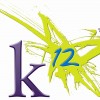 In 2012, New York State joined the ranks of those with a statewide site license for unlimited use of Esri’s ArcGIS software for K-12 education. The site license goes beyond serving the formal K-12 education sector. It also includes home-schooled children and informal educational groups such as scouting organizations, 4-H, and Boys and Girls Clubs. The site license was made possible through the collaborative efforts of the New York State GIS Association and the New York Institute of Technology. A number of school districts have begun to sign the Memo of Understanding to access the software, but the implementation is still in the early stages. As New York State GIS users, we can promote this opportunity to our local school districts and youth groups, and assist them in making the most of this valuable benefit. In this part of the session, Ann Deakin will outline the process for participating in the NYS Esri K-12 site license program, and how you can participate in this effort to share the value of a geospatial perspective with our youth.
In 2012, New York State joined the ranks of those with a statewide site license for unlimited use of Esri’s ArcGIS software for K-12 education. The site license goes beyond serving the formal K-12 education sector. It also includes home-schooled children and informal educational groups such as scouting organizations, 4-H, and Boys and Girls Clubs. The site license was made possible through the collaborative efforts of the New York State GIS Association and the New York Institute of Technology. A number of school districts have begun to sign the Memo of Understanding to access the software, but the implementation is still in the early stages. As New York State GIS users, we can promote this opportunity to our local school districts and youth groups, and assist them in making the most of this valuable benefit. In this part of the session, Ann Deakin will outline the process for participating in the NYS Esri K-12 site license program, and how you can participate in this effort to share the value of a geospatial perspective with our youth.
Google Earth and Maps have become a standard way of sharing geographic information. In addition, an intuitive interface and more than 20 pedabytes of accessible data make these programs ideal for many classroom introductions and projects. Google continues to develop new tools that enable data creation, analysis, and storage in the cloud. New tools also facilitate data collection and upload from mobile phones as well as the ability to publish and share data, maps, and geographic movies. Eileen Allen will show both existing and beta tools and share links to sample projects and resources.
Alex Chaucer was selected for the 2013 ESRI T3G Institute which focused primarily on ArcGIS Online while weaving in concepts around GIS pedagogy and working with teachers. A core tenet of T3G is connecting with a larger professional network of GIS educators, and this year there were over 90 attendees. This workshop is highly recommended for GIS educators who hope to be teacher mentors, as you learn how to work with the newest ESRI tools while also learning how to conduct professional development workshops for teachers. This session will show some highlights from T3G and some of the pedagogy and tools that were demonstrated.
Landsat 8 was launched February 11, 2013. At the same time, Adopt-a-Pixel was launched as a citizen science partnership to assist NASA scientists with landscape change research. People can collect ground control data and contribute photography, land cover, and location information to the program website. Participation during this pilot phase is particularly helpful as the data collection interface is being developed. In this presentation, Susan Hoskins will outline the program status and how to interact with the pilot program.
The 2013 Integrated Geospatial Education and Technology Training Remote Sensing (iGETT RS) project was funded by a grant from the National Science Foundation to the National Council for Geographic Education in collaboration with the NASA Goddard Space Flight Center, the USGS Landsat Project, and the GeoTech Center. Participants enhanced their remote sensing knowledge so that they can effectively teach students to identify, download, analyze, and integrate federal remotely sensed data into a GIS environment to solve real world problems. The participants used Landsat, MODIS and ASTER imagery to address topics in agriculture, biodiversity, climate change, disaster management, and urban planning, among others. Jon Little will share his experience at iGETT RS and projected program innovations he plans to implement at MCC.
Platinum Session
Highrock
 Esri plans to cover the latest developments in its platform approach for delivering GIS content and capabilities
Esri plans to cover the latest developments in its platform approach for delivering GIS content and capabilities  in the context of conference themes and technology trends. The high-value session will appeal to a broad audience, whether GIS veteran or newcomer. A variety of topics will be discussed and demonstrated including: evolution of the platform, new solution templates, ArcGIS for State Government, integrated workflows for OpenNY data, mobile data collection with out-of-the-box apps for iOS and Android, real-time GIS for emergency management, facility siting analysis, and advanced imagery and LiDAR capabilities.
in the context of conference themes and technology trends. The high-value session will appeal to a broad audience, whether GIS veteran or newcomer. A variety of topics will be discussed and demonstrated including: evolution of the platform, new solution templates, ArcGIS for State Government, integrated workflows for OpenNY data, mobile data collection with out-of-the-box apps for iOS and Android, real-time GIS for emergency management, facility siting analysis, and advanced imagery and LiDAR capabilities.
Facilitator: Verne LaClair, Vertex Geospatial, Inc
About ESRI
Tim Flewelling
380 New York Street
Redlands, CA 92373 USA
Phone: 909-793-285
Email: tflewelling@esri.com
www.esri.com
Esri® helps organizations map and model our world. Esri’s GIS technology enables them to effectively analyze and manage their geographic information and make better decisions. They are supported by an experienced and knowledgeable staff and an extensive network of business partners and international distributors.
| The Saratoga Lake watershed, located in New York State, has undergone many transitions over the past 150 years. Agriculture, industry, recreation, tourism, and urban development have transformed the local landscape. Through ESRI’s online Story Map platform, we can virtually tour the rephotography process and visually conceptualize these local landscape changes. Historical images were first collected and their approximate locations determined. A ‘then and now’ perspective was created by returning to the same sites, taking close to exact photographs of contemporary views. This work complements a series of aerial photographs taken of the watershed in the 1940s, 1960s, and 1980s.This collection of photographs was created by Skidmore College student Nicholas Liu-Sontag with the help of Karen Kellogg and Alex Chaucer in the Summer of 2010. The original photographs were gathered from local museums and historical societies. Historical records and local residents helped determine the original location of each photograph.
This rephotography project is one of many others in association with the Water Resources Initiative (WRI) at Skidmore College, administered by the interdepartmental Environmental Studies program. WRI emphasizes the importance of interdisciplinary, community-based research, and is currently focused on the Saratoga Lake watershed. |
